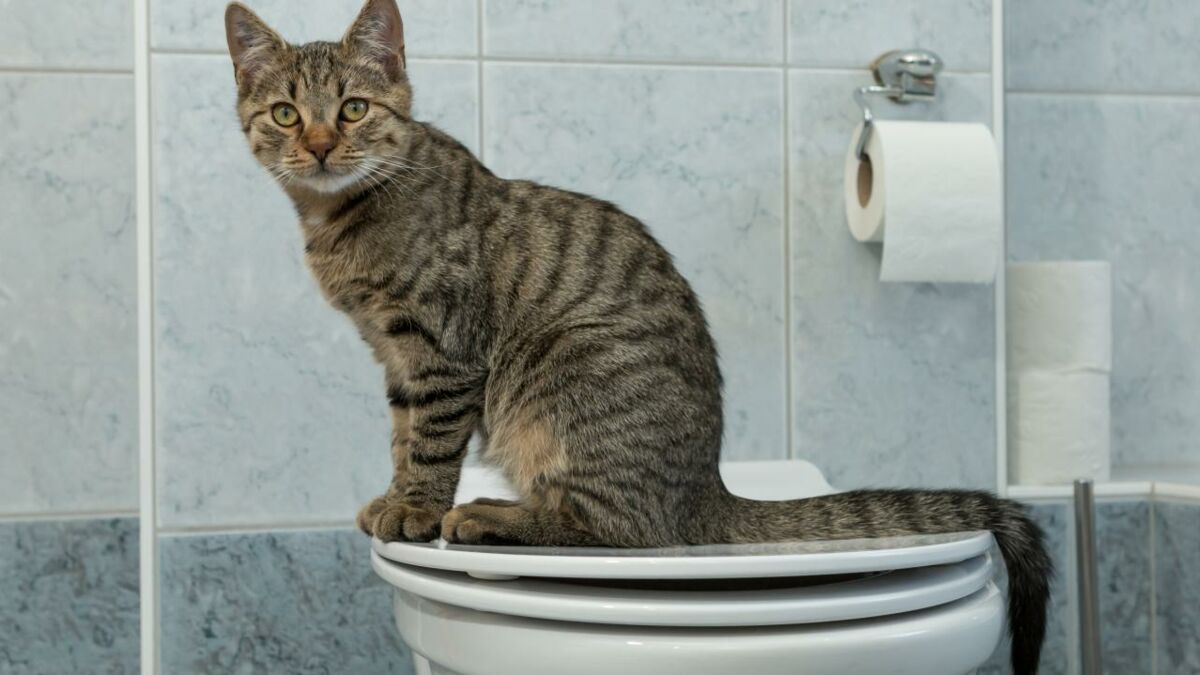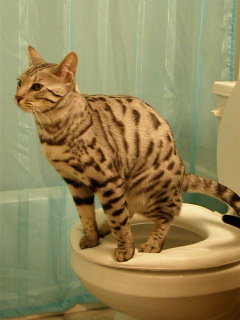Avoid Clogs and Damage: Don't Flush Cat Poop Down Your Toilet - Professional Recommendations
Avoid Clogs and Damage: Don't Flush Cat Poop Down Your Toilet - Professional Recommendations
Blog Article
What're your thoughts concerning How to Dispose of Cat Poop and Litter Without Plastic Bags?

Introduction
As pet cat proprietors, it's vital to bear in mind just how we take care of our feline close friends' waste. While it may seem practical to flush pet cat poop down the commode, this technique can have destructive effects for both the environment and human health.
Alternatives to Flushing
Luckily, there are more secure and more responsible methods to deal with feline poop. Think about the following choices:
1. Scoop and Dispose in Trash
One of the most usual method of disposing of cat poop is to scoop it into a biodegradable bag and throw it in the trash. Make certain to use a specialized trash scoop and get rid of the waste without delay.
2. Usage Biodegradable Litter
Select biodegradable feline clutter made from materials such as corn or wheat. These litters are environmentally friendly and can be safely gotten rid of in the garbage.
3. Bury in the Yard
If you have a backyard, consider burying feline waste in an assigned location away from veggie yards and water sources. Make certain to dig deep sufficient to prevent contamination of groundwater.
4. Install a Pet Waste Disposal System
Purchase an animal garbage disposal system particularly created for feline waste. These systems make use of enzymes to break down the waste, minimizing smell and environmental impact.
Wellness Risks
In addition to environmental issues, flushing pet cat waste can also position wellness risks to human beings. Pet cat feces might include Toxoplasma gondii, a parasite that can create toxoplasmosis-- a potentially extreme disease, specifically for pregnant ladies and people with damaged body immune systems.
Environmental Impact
Flushing cat poop introduces unsafe virus and bloodsuckers into the water supply, positioning a substantial threat to marine environments. These contaminants can adversely influence marine life and concession water high quality.
Final thought
Liable pet dog possession extends beyond offering food and shelter-- it likewise includes appropriate waste administration. By avoiding purging feline poop down the bathroom and going with different disposal approaches, we can minimize our environmental impact and shield human wellness.
Why You Should NEVER Flush Cat Poop (and/or Litter) Down Your Toilet
The Problem with Litter
The main function of litter is to solidify and adhere to your cat’s waste. While this makes litter excellent for collecting cat poop and urine, it’s also the exact property that makes it a nightmare when flushed down the toilet.
Cat litter can and will clog pipes. There is non-clumping litter, but it’s still quite heavy and can build up in pipes. This is true even of supposed “flushable litter.”
The problems only compound when the litter is already clumped into cat waste. Toilet paper is among the more flushable things, and even too much of that will clog a toilet.
The Problem with Cat Poop
Sewers and septic systems are designed with human waste in mind. The microbes that help break down human waste don’t work on cat waste. Additionally, cat poop plays host to the parasite Toxoplasma gondii.
When flushed, this parasite can enter the environment in places it was never meant to, posing a risk to pregnant women, their unborn children, and other people with compromised immune systems. While it might not seem possible, flushing cat poop can indeed introduce this parasite to the public water supply.
These reasons are why, even if you’ve trained your cat to go on the toilet and flush, which is possible, it’s still not a good idea. Also, pregnant women and the immunocompromised shouldn’t change litter, either.
How to Handle Litter
The best way to handle litter is to simply put it in a plastic bag and place it in the trash. Avoiding environmental risks and possible plumbing damage is worth the extra effort.
You can also invest in devices that seal away your cat’s waste in a separate compartment, so you don’t have to change the litter nearly as often. They’re also safer for pet owners because they limit the possibility of Toxoplasma gondii exposure.
Disposing of litter the old-fashioned way will ensure you won’t have to worry about any issues that flushing the waste can potentially cause.
Take Care of Clogged Pipes with Stephens Plumbing, Heating & Air Conditioning
The reasons you should never flush cat poop down your toilet are numerous, but sometimes the inevitable happens despite your best efforts.
Stephens Plumbing, Heating & Air Conditioning is ready to help if you’re experiencing litter-blocked plumbing. Whether you need us in an emergency or want to schedule regular maintenance, we’re here for you.
https://www.stephensplumbing.net/bathroom-plumbing/never-flush-cat-poop-down-your-toilet/

We were made aware of that write-up about How to Dispose of Cat Poop and Litter Without Plastic Bags through a friend on another web property. Sharing is nice. You just don't know, you might be doing someone a favor. Thanks so much for taking the time to read it.
Click Here Report this page